
Why Do Cats Sleep a Lot?. Owners of cats are familiar with the sleepy lifestyle of their pets. Cats sleep an average of 17 to 18 hours a day, which means that they sleep about 2/3 of their lives. Cats have certain periods of the day when they are most active and certain places where they prefer to sleep. Like humans, domestic felines experience different stages of sleep. It is not entirely understood why cats sleep as much as they do, although certain factors seem to influence their sleep cycles.
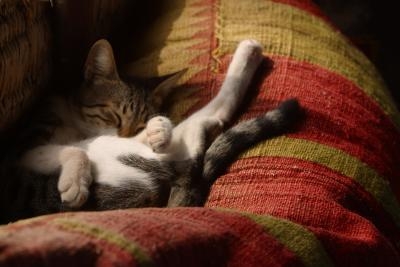
Because cats are predators, they do not need to spend long periods of their days grazing for food like herbivores do. Cats can quickly catch their prey, or be fed a can of protein-rich cat food that physically sustains them and frees up their time for sleeping. Cats are known to expend their energy hunting, which means their bodies may require long periods of rest or sleep in order to conserve energy for the next hunt. How long cats sleep varies. Kittens require more sleep than adult cats, while cats that feel safe sleep more than fearful or anxious cats. Cats that are bored will sleep more than cats that socially interact with humans and other pets.
According to "The Character of Cats" by Stephen Budiansky, cats spend around 85 percent of a 24-hour day sleeping or resting; the other 15 percent of their day is spent being active or eating and drinking. Cats are crepuscular animals, which means they are most active around dawn and dusk. After cats nap throughout the day, they may wake up wanting to exert their energy at night or in the early morning when their owners are asleep. Cats, however, do have the ability to readily adapt to their owner's schedules, and many indoor cats can sleep throughout the night. Playing with your cat and letting it burn off excess energy can help it sleep more soundly.
Cats are similar to humans in that they experience two forms of sleep: rapid eye movement sleep and non-rapid eye movement sleep. In "The Cat Behavior Answer Book," author Arden Moore says that cats spend about 30 percent of their sleep time in REM sleep compared to humans, who spend about 20 percent of their time in REM sleep. In NREM sleep, cats are in a deep stage of sleep and do not dream. Their chests move quietly up and down, while internally, muscles and bones are regenerating and repairing themselves. Cats dream in REM sleep, although what they dream of is a mystery. Their whiskers or legs may twitch while in REM, and their eyes may move behind their eyelids.
Cats like to seek out warm, comfortable places to sleep or nap. They will seek out sofas and beds or warm surfaces, such as the top of the hood of a car. According to "The Cat Behavior Answer Book," about 1/3 of cat owners sleep with their cats. Having your cat sleep in your bed, however, can disrupt your own sleep. Cats that try and take up space on your pillow should be moved to another location or retrained to sleep at the bottom of the bed.
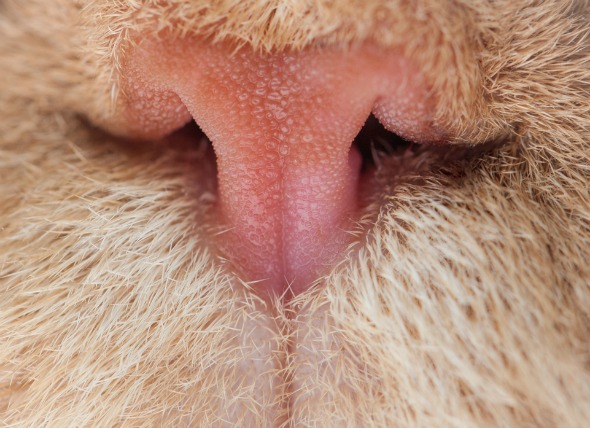 Nose Pad Cancer (Squamous Cell Carcinoma) in Cats
Squamous Cell Carcinoma of the Nasal Planum in Cats
&nbs
Nose Pad Cancer (Squamous Cell Carcinoma) in Cats
Squamous Cell Carcinoma of the Nasal Planum in Cats
&nbs
 Why Do Cats Go Outside the Litter Box?
Cat owners love their cats a
Why Do Cats Go Outside the Litter Box?
Cat owners love their cats a
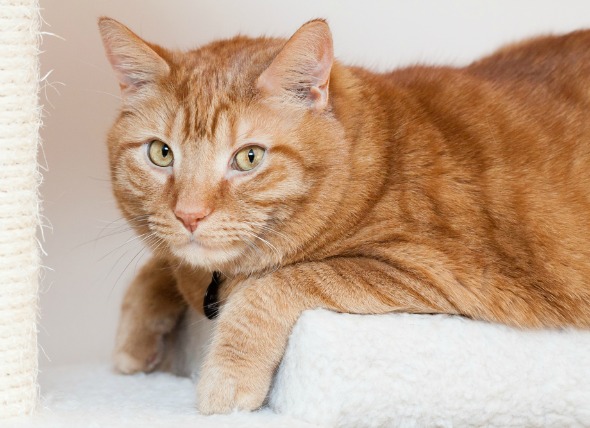 Fluid in Abdomen in Cats
Ascites in Cats
Ascites, also known as abdominal
Fluid in Abdomen in Cats
Ascites in Cats
Ascites, also known as abdominal
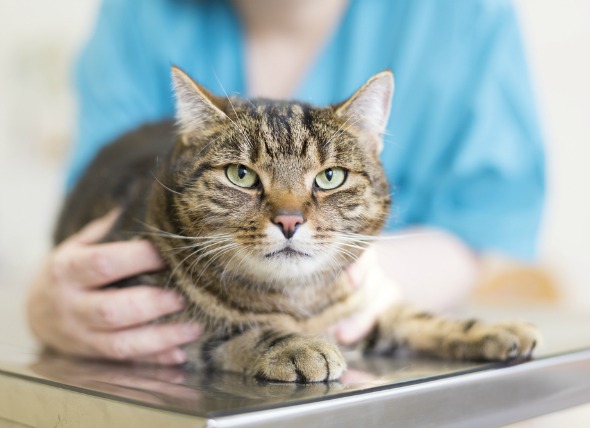 Intestinal Parasite (Coccidia) in Cats
Coccidiosis in Cats
Coccidiosis is a parasitic ty
Intestinal Parasite (Coccidia) in Cats
Coccidiosis in Cats
Coccidiosis is a parasitic ty
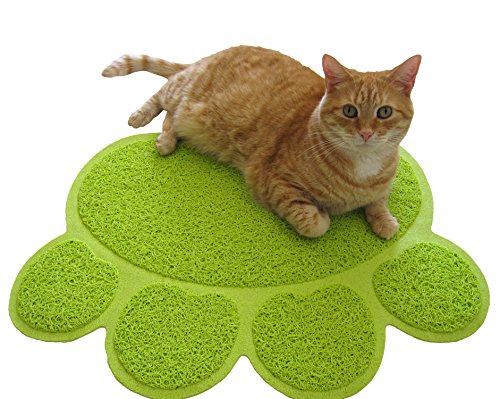 Understanding White Cat Breeds
There is something sophistic
Understanding White Cat Breeds
There is something sophistic
Copyright © 2005-2016 Pet Information All Rights Reserved
Contact us: www162date@outlook.com